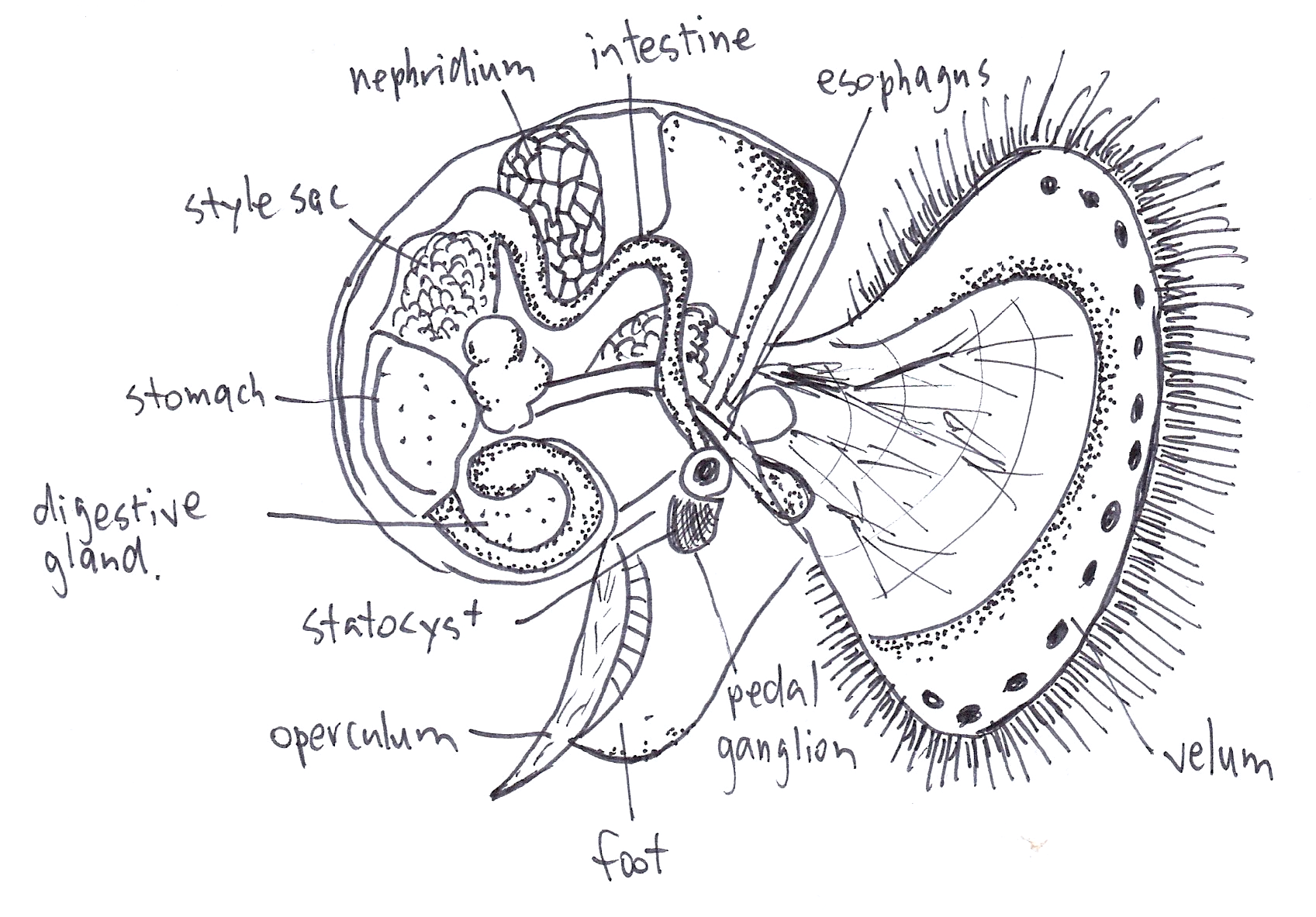Brief Summary
Distribution
Physical Description
Size
Identification Resources
Ecology
Local Distribution
Crypsis
Life History & Behaviour
Feeding
Burrowing
Chemosensory Perception
Reproduction and Larval Biology
Anatomy & Physiology
Morphology
Evolution & Systematics
Fossil History
Phylogeny
Biogeographic Distribution
Conservation & Threats
Human Threats
References & Links
| REPRODUCTION AND LARVAL BIOLOGY
Members of the family Mactridae reproduce gonochoristicly. This means that the male and female gametes are enclosed in seperate individuals (as opposed to being hermaphrodidic, where both the male and female gametes are in a single individual and reproduction occurs without a mate). They are broadcast spawners, and release eggs and sperm into the water column where external fertilization occurs.
Once an egg has been fertilized, it undergoes spiral cleavage and forms a typical free swimming, molluscan trochophore larvae. This stage of the development is planktonic and the larvae can be dispersed as a result of ocean currents. From this trochophore larvae, the long-lived, highly dispersive veliger larvae is formed. As shown in figure 1, the veliger contains the major anatomical components with the addition of a veliger. This veliger is lost at the time of metamorphosis and the characteristic bivalve shell grows over the body.

Figure 1: The veliger larvae stage of the bivalve life cycle. This diagram is representative of the stage before the shell grows over the organism. |
|